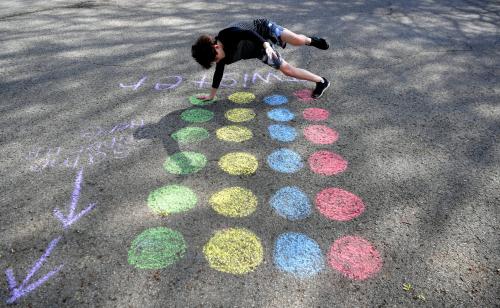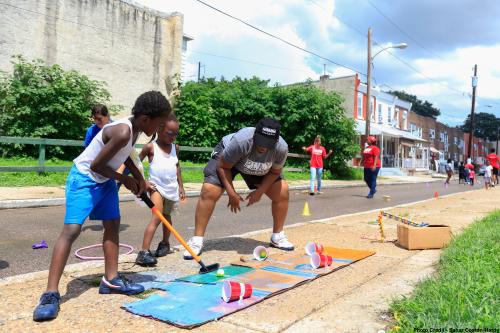Do you remember learning fractions in school? This can be a sore subject for many of us—how to add and subtract them and how to convert to decimals and vice versa. Why do you need to find the lowest common denominator to add or subtract fractions, but not for multiplying or dividing? What do you mean, 2/3 and 66 percent are the same thing? If this was your experience, you are not alone. Research shows that rational math (dealing with ratios like fractions, decimals, and percentages) are a gatekeeper for learning complex math and science concepts, and can be the start of a downward spiral in math and science learning.
For decades, researchers have documented elementary and middle school students’ struggles with fractions. One recent study conducted in the United States found that eighth graders taking Algebra 1 performed no better than if they were guessing on a multiple choice test of fractions. The data mirrors the results of eighth graders that participated in a much larger study (20,000+ students) conducted in 1978. Despite concerted efforts of math teachers, researchers, textbook publishers, and government commissions to improve students’ understanding of rational numbers over the past 40 years, progress has been negligible. This is especially disconcerting considering rational numbers are pervasive throughout professional contexts, such as medicine (e.g., assessing test results) or economics (e.g., currency exchanges), and in everyday contexts like gas usage (e.g., miles per gallon), cooking (e.g., two eggs for four portions), and shopping (e.g., 20 percent discount).
So how can we make fractions easier and more fun to learn?
Fraction Ball
Here we describe a new approach to rational number learning that addresses these challenges through a playful and physically active game called “Fraction Ball.” In line with the Playful Learning Landscapes initiative, Fraction Ball brings math from the classroom into the schoolyard and provides a playful context for students to engage in embodied rational number learning. Fraction Ball targets students’ conceptual understanding of fractions by leveraging research in math cognition that suggests number line representations and a focus on rational number magnitudes are key levers for student learning. Fraction Ball reimagines the lines of a basketball court to emphasize fraction and decimal learning by allowing children to take shots that are worth a fraction of a point.

The traditional 3-point arc is converted into a 1-point arc and smaller arcs closer to the basket represent 1/4, 1/2, and 3/4 point shots on one end of the court and 1/3 and 2/3 point shots on the opposite end. The numbers are also represented as fractions on one side of the court and decimals on the other side so that children can see that 0.75 and 3/4 have the same value and can practice converting back and forth. Along the side of the court, a number line with both fractions and decimals helps students keep track of their score while structured games provide opportunities to add fractions and decimals in a playful context. Children take on three roles during the games—shooter, rebounder, and counter. The games have different objectives like making as many points as possible in two minutes or racing to an exact number (e.g., 3.25), and competition provides motivation for children to engage in arithmetic quickly and accurately.
Fraction Ball was developed and tested by a team of researchers in the School of Education at the University of California, Irvine in collaboration with teachers and administrators from El Sol Science & Arts Academy in Santa Ana, CA. The team has now completed two rounds of pilot testing, and the results are highly promising. Through an experimental design, 160 fourth- through sixth-grade students were randomly assigned to play six 50-minute sessions of Fraction Ball with their teachers during physical education (PE) class, or to remain in PE business as usual. Students in the Fraction Ball group demonstrated significantly greater learning from pre- to post-test on assessments of fraction and decimal numbers. Specifically, Fraction Ball improved students’ performance on fraction and decimal arithmetic, converting fractions to decimals, and placing fractions on 0 to 1 number lines—all of which are key for developing a strong conceptual understanding of rational numbers.
Fraction Ball represents a low-cost, highly scalable intervention that promotes math learning with a fun and engaging approach that is based squarely in scientific evidence on the way children learn best. Yes, many of us may have traumatic memories of learning opaque rules about how to multiply fractions, but we can do better for the next generation of learners. We can leave them fond memories of playing basketball with their friends and a deeper conceptual understanding of rational numbers. We can make learning joyful, the way it is meant to be.
Acknowledgements: The authors would like to acknowledge Associate Professors Drew Bailey and Lindsey Richland from the School of Education at University of California, Irvine for their critical contributions to this work. Similarly, they thank the teachers, students, and administrators at El Sol Academy for their collaboration, which made this work possible. Finally, they thank the School of Education at University of California, Irvine and the Department of Psychology at California State University, Long Beach for their institutional support.
Photo credits: Kenny Lewis
The Brookings Institution is committed to quality, independence, and impact.
We are supported by a diverse array of funders. In line with our values and policies, each Brookings publication represents the sole views of its author(s).











Commentary
Having a ball with fractions: Fostering math skills through playful learning
July 21, 2020